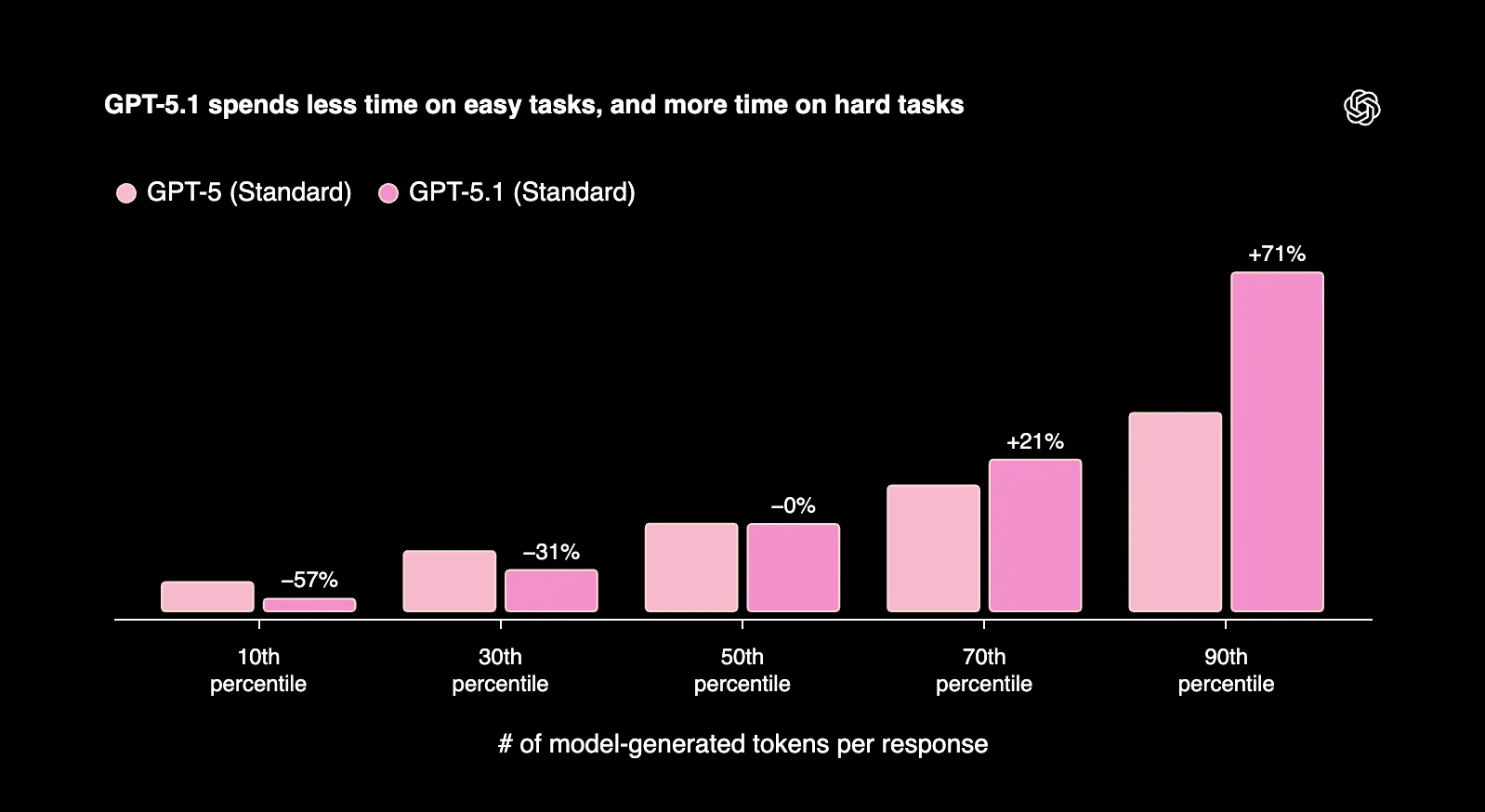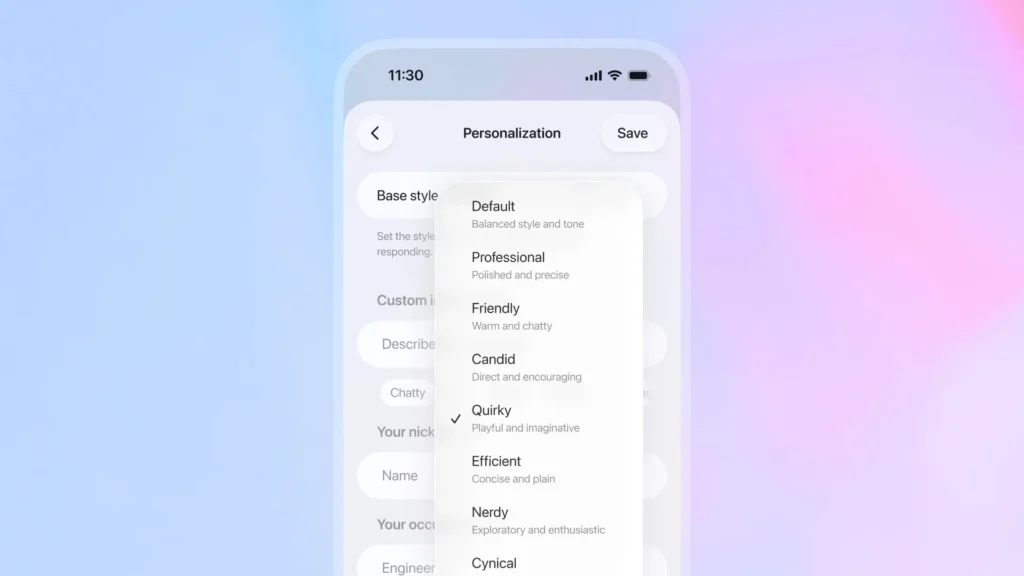OpenAI launches GPT-5.1: A faster and friendlier AI for all users
OpenAI launches GPT-5.1, the latest iteration of its flagship model released last August.
This update introduces two primary variants—GPT-5.1 Instant and GPT-5.1 Thinking—along with a host of improvements focused on enhancing interaction fluidity, response speed, and tone personalization.
GPT-5.1: Two New Models for Different Uses
OpenAI describes GPT-5.1 as a direct upgrade to GPT-5, built on the same architecture but optimized for better understanding, reasoning, and communication.
GPT-5.1 Instant: Designed for quick interactions, OpenAI presents it as “warm, intelligent, and better at following instructions.” It adopts a more natural tone and responds more swiftly without sacrificing accuracy.GPT-5.1 Thinking: Intended for complex tasks, it adjusts its “depth of reasoning” based on the complexity of a request—quick for simple inquiries and thorough for lengthy analyses.
User queries will automatically be directed to the most appropriate model thanks to the auto-selection system (“GPT-5.1 Auto”).
More Natural and Personalized Conversations
One of the key focuses of GPT-5.1 is tone personalization. OpenAI adds new personality “presets” that allow users to adjust the model’s style based on the conversation type. The options now available are: Default, Professional, Warm, Spontaneous, Quirky, Efficient, Geeky, and Cynical.
“With over 800 million ChatGPT users, we have surpassed the stage of a one-size-fits-all model,” explains Fidji Simo, CEO of OpenAI Applications.
Users can thus choose between a professional, direct, friendly, or humorous tone. OpenAI is also testing finer adjustments in settings, allowing users to modify warmth, conciseness, or the use of emojis in responses.
An AI That Thinks Smarter
GPT-5.1 marks a step forward in managing the model’s cognitive resources. GPT-5.1 Instant employs adaptive reasoning, automatically deciding whether to “think” deeper about a question. GPT-5.1 Thinking, on the other hand, adjusts the computational power allocated based on the subject’s complexity.
According to OpenAI, this enables Thinking to outperform GPT-5 on simple tasks while maintaining improved performance on more complex, multi-step reasoning problems.
Responses are also clearer, featuring less jargon and fewer ambiguous phrases, a point appreciated by professional users.
Better Fusion of IQ and EQ
OpenAI emphasizes that GPT-5.1 is not just “smarter,” but also more enjoyable to use. “People want an AI that understands both their emotions and their questions,” Simo notes. “GPT-5.1 strikes a better balance between IQ and EQ.”

Initial internal evaluations suggest that the model adopts a more natural and playful tone while maintaining the rigor and precision expected from a professional assistant.
Gradual Rollout and Compatibility
The new models are available starting today for ChatGPT Pro, Plus, Go, and Business users, as well as for free accounts. Enterprise and Edu plans benefit from a seven-day early access period before GPT-5.1 becomes the default model.
GPT-5.1 Instant and Thinking are also accessible via the API, along with their respective reasoning capabilities.
The previous versions of GPT-5 will remain available for three months through the “Legacy Models” menu before being phased out. This transition period is part of OpenAI’s new strategy: “Every major update will now have a clear timeline for evaluation and user feedback.”
Restoring GPT-5’s Reputation After a Mixed Launch
The launch of GPT-5 in August faced criticism: users expected a significant leap in performance but found the improvements to be “too subtle.” Under pressure, OpenAI even had to reintroduce GPT-4o as an option the day after the launch.
With GPT-5.1, the company hopes to restore trust by delivering a smoother, more engaging AI that better meets practical needs.
An Intense Competitive Landscape
This update comes amid Microsoft’s strategic partnership with OpenAI, which is increasingly exploring Anthropic’s models now used in Copilot Researcher, GitHub Copilot, and Office Agent. Therefore, OpenAI needs to demonstrate that its ecosystem remains at the forefront of performance and user experience.
Furthermore, the announcement of GPT-5.1 closely follows that of ChatGPT Atlas, the company’s new intelligent browser that allows AI to perform online tasks through its “Agent Mode.”
GPT-5.1 may not be a technical revolution, but it is an intelligent evolution: faster, more customizable, and, above all, more human in its interactions.
By incorporating more emotion, tone, and adaptability, OpenAI transforms ChatGPT from a simple text assistant into a true conversational companion.
It remains to be seen if these improvements will be sufficient to close the gap with Anthropic and rekindle enthusiasm for GPT-5.




